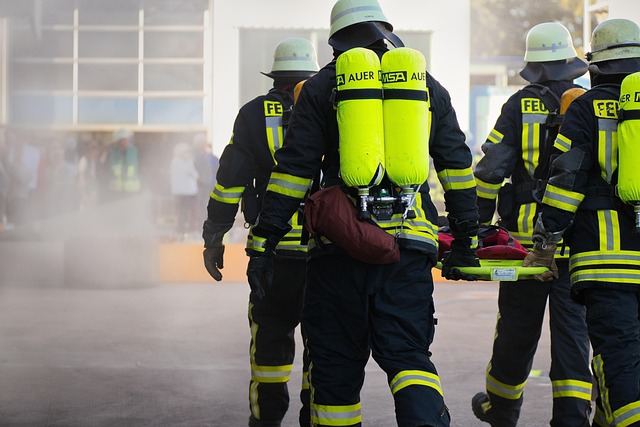Discover What You Need to Know About Firefighting Careers
Firefighting careers offer a unique combination of public service, physical challenge, and community impact that attracts thousands of individuals annually. These positions require dedication, extensive training, and a commitment to protecting lives and property during emergencies. Understanding the requirements, preparation process, and career pathways can help aspiring firefighters make informed decisions about entering this demanding yet rewarding profession.

Everything You Need to Know About Entry-Level Firefighting Prep
Entry-level firefighter preparation involves meeting basic eligibility requirements that vary by jurisdiction but typically include being at least 18-21 years old, holding a high school diploma or equivalent, and passing medical and psychological evaluations. Many departments require candidates to complete Emergency Medical Technician (EMT) certification before applying, while others provide this training during the hiring process.
Academic preparation often includes coursework in fire science, emergency medical services, or related fields. Community colleges frequently offer fire academy programs that provide foundational knowledge in fire suppression, hazardous materials handling, and rescue operations. These programs typically last 12-16 weeks and combine classroom instruction with hands-on practical exercises.
Background checks are standard across all fire departments, examining criminal history, driving records, and personal references. Candidates should maintain clean records and demonstrate good judgment in their personal and professional lives, as firefighters are held to high ethical standards within their communities.
Explore How to Begin Your Firefighting Career
Beginning a firefighting career starts with researching local fire departments and their specific hiring requirements. Many departments hire on a cyclical basis, sometimes conducting recruitment only every few years, making timing crucial for prospective candidates. Municipal fire departments, volunteer fire companies, and federal agencies like the U.S. Forest Service offer different pathways into the profession.
The application process typically includes written examinations testing basic math, reading comprehension, and mechanical reasoning skills. Successful candidates advance to physical ability tests, medical examinations, and structured interviews with department personnel. Some jurisdictions use civil service systems that rank candidates based on test scores and preferences for military veterans or residents.
Networking within the firefighting community can provide valuable insights and opportunities. Attending recruitment events, volunteering with local fire departments, or participating in ride-along programs helps candidates understand department culture and expectations while demonstrating genuine interest in the profession.
A Guide to Firefighting Physical Prep and Entry-Level Roles
Physical preparation requires developing cardiovascular endurance, functional strength, and agility to perform demanding tasks under stressful conditions. Firefighters must be capable of climbing ladders while carrying heavy equipment, dragging unconscious victims to safety, and working in extreme temperatures while wearing protective gear that can weigh 45-60 pounds.
Training regimens should incorporate exercises that simulate firefighting activities, such as stair climbing with weighted packs, rope climbing, and functional movements like carrying, dragging, and lifting. Many fire departments use standardized physical ability tests like the Candidate Physical Ability Test (CPAT), which includes eight timed events measuring different aspects of physical fitness.
Entry-level roles typically begin with probationary periods lasting 6-18 months, during which new firefighters receive additional training and mentoring from experienced personnel. Probationary firefighters perform the same duties as veteran firefighters but work under closer supervision while demonstrating competency in essential skills and knowledge areas.
Career Advancement and Specialization Opportunities
Firefighting careers offer numerous advancement opportunities through promotion and specialization. Common promotional ranks include Lieutenant, Captain, Battalion Chief, and Fire Chief, each requiring additional training, education, and demonstrated leadership abilities. Many departments require college degrees for higher-ranking positions, encouraging ongoing education throughout firefighters’ careers.
Specialization areas include hazardous materials response, technical rescue, fire investigation, emergency medical services, and fire prevention education. These specializations often require additional certifications and training but can lead to increased responsibilities and compensation. Some firefighters pursue careers in related fields such as fire protection engineering, emergency management, or fire service instruction.
Salary Expectations and Employment Benefits
Firefighter salaries vary significantly based on geographic location, department size, and experience level. Entry-level firefighters in smaller communities might earn $35,000-$45,000 annually, while those in major metropolitan areas can start at $65,000-$85,000 or higher. Career firefighters with several years of experience in large departments may earn $80,000-$120,000 annually, with additional compensation for overtime and specialized assignments.
| Location Type | Entry-Level Salary | Experienced Firefighter | Benefits Package |
|---|---|---|---|
| Small Towns | $35,000-$45,000 | $50,000-$65,000 | Basic health, pension |
| Mid-Size Cities | $45,000-$65,000 | $65,000-$85,000 | Full health, pension, paid time off |
| Major Metro Areas | $65,000-$85,000 | $80,000-$120,000+ | Comprehensive benefits, pension, overtime |
Prices, rates, or cost estimates mentioned in this article are based on the latest available information but may change over time. Independent research is advised before making financial decisions.
Benefits packages typically include health insurance, retirement plans, paid vacation and sick leave, and educational assistance programs. Many firefighters work schedules that provide significant time off, such as 24-hour shifts followed by 48-72 hours off duty, allowing for secondary employment or personal pursuits.
Firefighting careers demand physical courage, mental resilience, and genuine commitment to public service, but they offer stable employment, competitive compensation, and the satisfaction of making meaningful contributions to community safety. Prospective firefighters who thoroughly prepare themselves physically, academically, and mentally will find rewarding opportunities in this essential profession that serves communities across the country.




